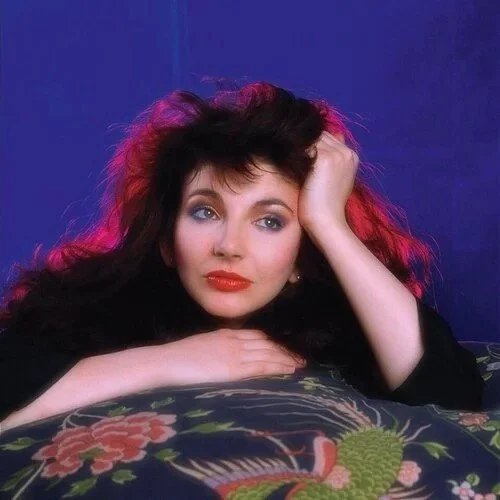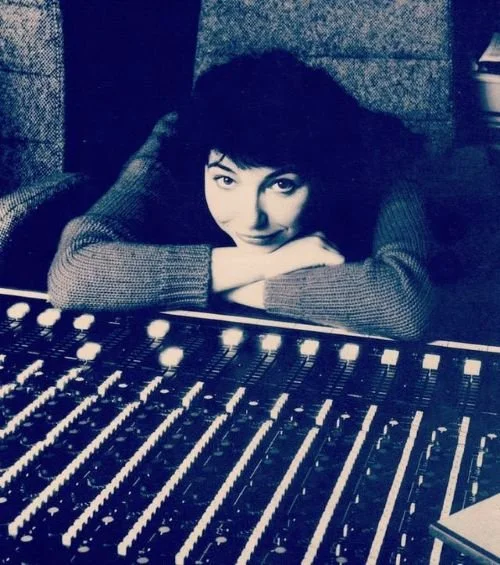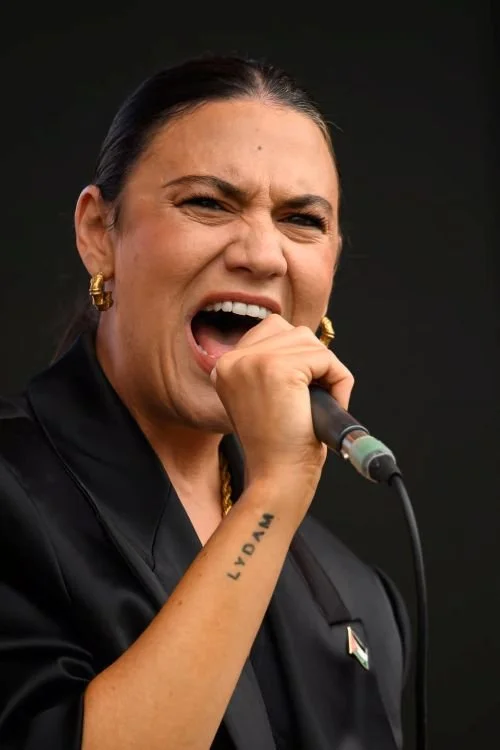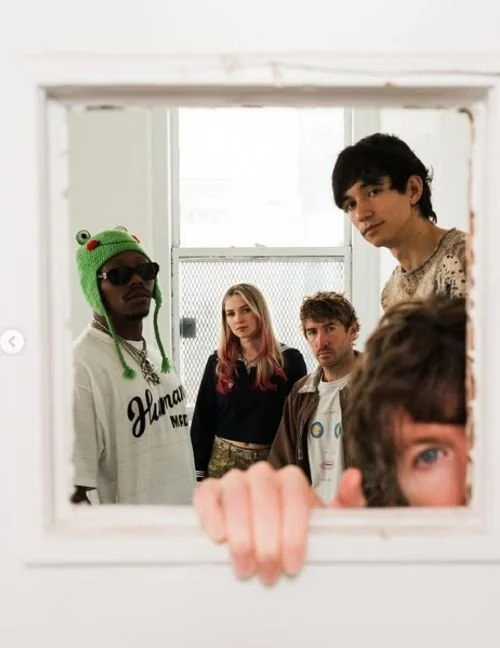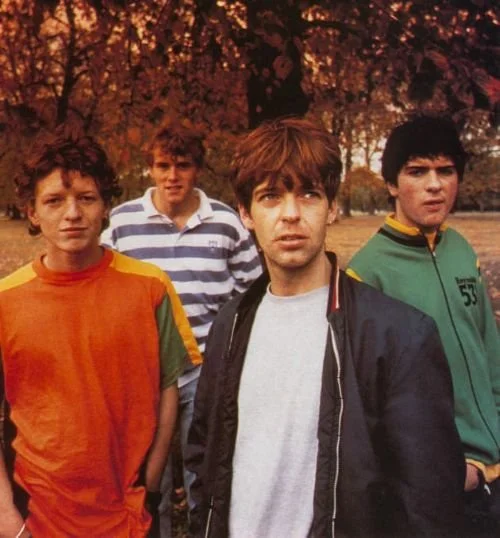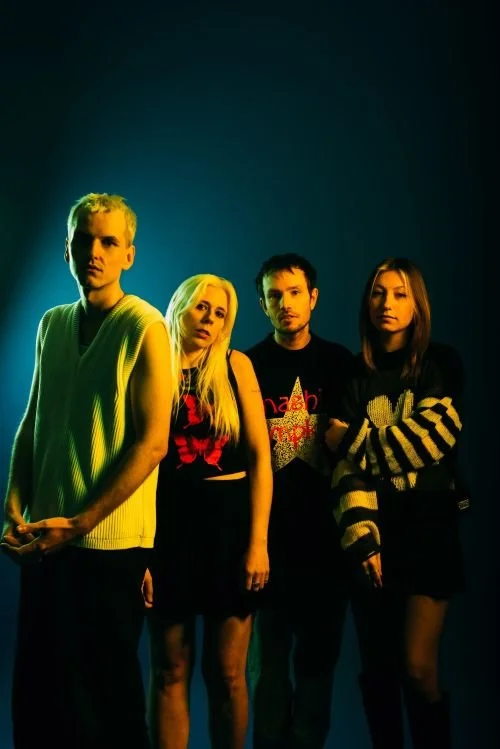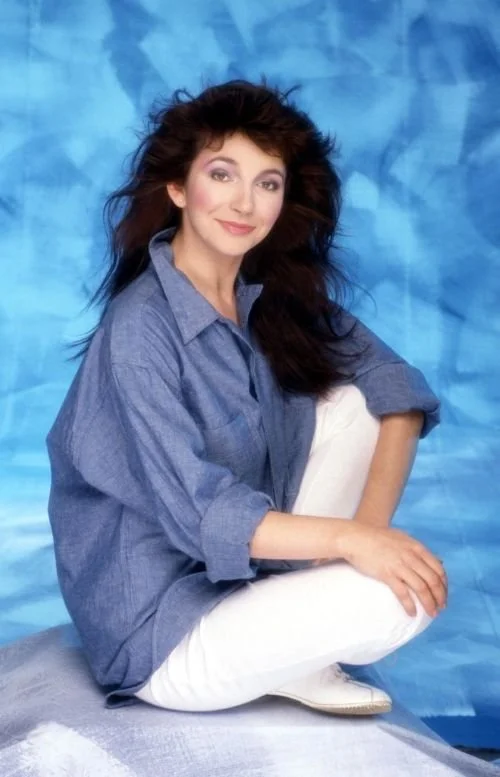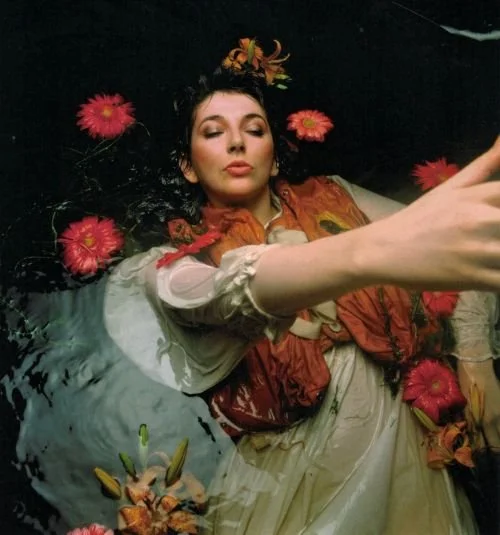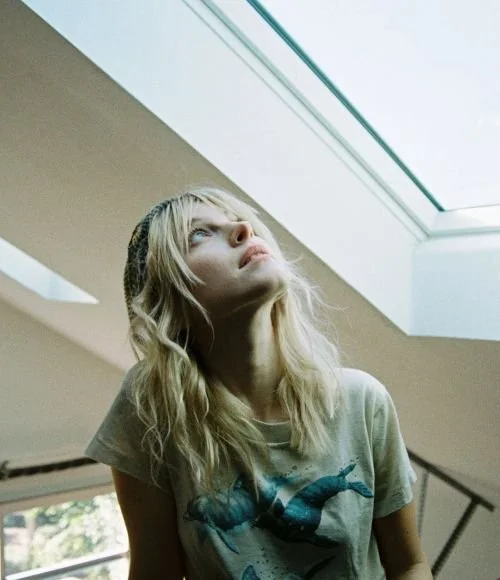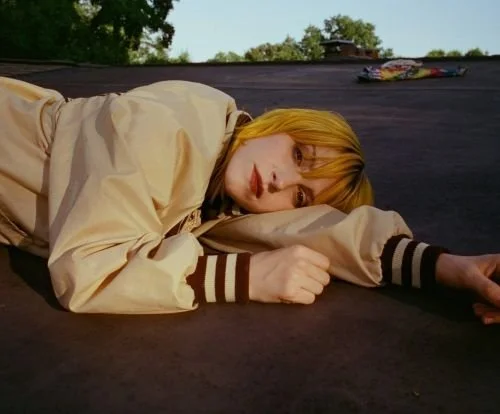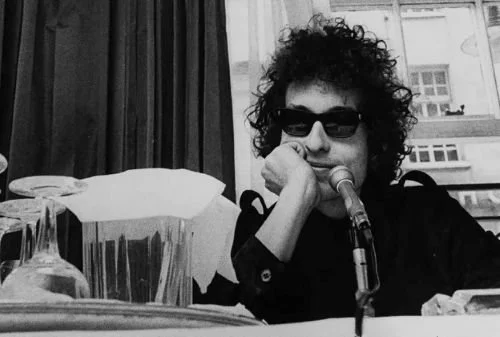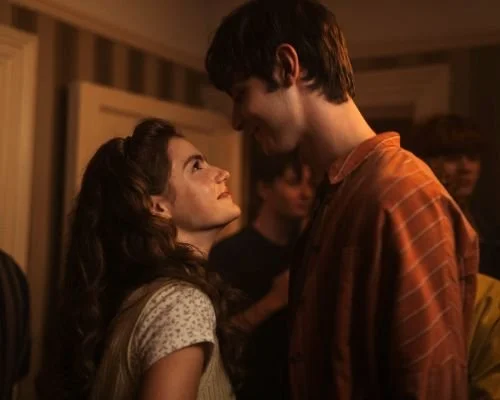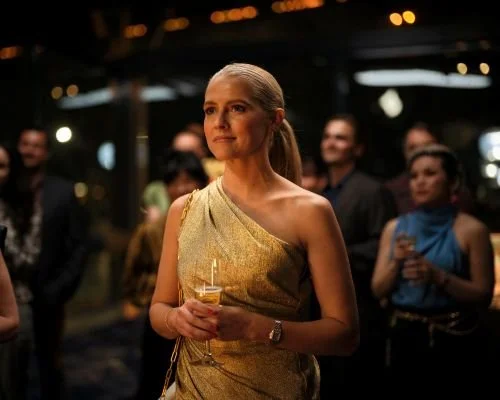FEATURE:
Feminist Icons
never really got off the ground. The idea being to celebrate amazing women who I consider to be feminist icons. A chance to step away from music and focus on essential feminist voices who I admire and who are doing vital work. Maybe the women I selected do not think of themselves as feminist icons or would not agree with my words. However, when it comes to the women I have featured – including Michelle Obama and Caitlin Moran –, I think I am justified in elevating them to this level. The final edition of this feature focuses on someone I spotlighted earlier in the year. Jess Davies’s book, No One Wants to See Your D*ck: A Handbook for Survival in the Digital World is my book of the year. I also saw Davies speak for The Trouble Club earlier this year, and it was one of the best events they have put on this year. She is someone I follow on Instagram and Twitter and am always in awe of. I shall leave her be for the rest of the year, though I urge people to buy her book and follow her. Such an important voice, she is not only inspiring and empowering many young women. I was very affected by No One Wants to See Your D*ck: A Handbook for Survival in the Digital World, and I was shocked by the end. The extent to which many women are subjected to unwanted sexual imagers and abuse online. It is strangely relevant now. Alongside Laura Bates’s latest book – who covered some similar themes for The New Age of Sexism: How the AI Revolution is Reinventing Misogyny -, Jess Davies’s book is essential reading. I saw the news that Elon Musk’s A.I. has been accused of making explicit Taylor Swift videos. Jess Davies talks about deepfakes and image-based sexual abuse in No One Wants to See Your D*ck: A Handbook for Survival in the Digital World. It is horrifying to think how prevalent it is. Women’s photos and images used and placed on other women’s bodies. Simulating pornography. The number of men who access these videos and share them. An epidemic that is becoming more common because of A.I. and the fact social media sites do not do enough to protect women, it always makes me so angry!
Maybe Jess Davies would resent being labelled as a feminist icon. Perhaps too lofty a declaration. However, an icon is someone who is a representative symbol or someone worthy of veneration. She works tirelessly to raise awareness of the situation online. How there is this rise in image-based sexual abuse against women and girls. How technology and A.I. is helping create this horrifying state of affairs where personal photos are used to catfish people and appear in sexually explicit videos. Or men pay money to access the photos and share them with other men who, without spelling it out, gratify themselves. Also, consider the rise in sexual assault cases and the high-profile men this year alone who have been accused of rape, sexual assault and violence against women. Diddy among them. Jess Davies reacts to these stories, and she is someone who campaigns for women. I am not going to repeat too much of what I wrote recently, as I want to keep things fairly brief and new. However, in April, Davies spoke with The Guardian about No One Wants to See Your D*ck: A Handbook for Survival in the Digital World:
“Her book, No One Wants to See Your D*ck, takes a deep dive into the negatives. It covers Davies’s experiences in the digital world – that includes cyberflashing such as all those unsolicited dick pics – as well as the widespread use of her images on pornography sites, escort services, dating apps, sex chats (“Ready for Rape? Role play now!” with her picture alongside it). However, the book also shines a light on the dark online men’s spaces, what they’re saying, the “games” they’re playing. “I wanted to show the reality of what men are doing,” says Davies. “People will say: ‘It’s not all men’ and no, it isn’t, but it also isn’t a small number of weirdos on the dark web in their mum’s basements. These are forums with millions of members on mainstream sites such as Reddit, Discord and 4chan. These are men writing about their wives, their mums, their mate’s daughter, exchanging images, sharing women’s names, socials and contact details, and no one – not one man – is calling them out. They’re patting each other on the back.”
PHOTO CREDIT: Francesca Jones/The Guardian
It has taken years for Davies to shift the blame away from herself and on to them. For most of her adult life, she says, she carried shame and stigma around like a “weighted cross” on her back. “Every time I was taken advantage of, I kind of accepted it,” she says. “I thought: ‘Oh well, you’ve opened yourself up to this. What did you expect?’ Part of me believed that this is just how the world is, and this was all I was worth.” That message was delivered in so many ways. As a model, she tried setting boundaries, never shooting topless content. When she was once asked to pose in a mesh bodysuit, she agreed on the understanding that her nipples would be edited out. She was assured they would be. A month later, the pictures appeared in a Nuts magazine summer special, nipples very clearly on display, an image that was quickly scanned and shared on the internet. (Davies remembers crying in her mum’s arms as her standards collapsed in a “pathetic heap of lost hopes”.)
Her book sets the spotlight firmly back on the perpetrators to ask how their online behaviour could ever be accepted as “normal”, or “just what happens”. Davies doesn’t have to look very hard to find activity that should disturb anyone: nudify requests where AI apps are used to create fake nude images (“nudify my sister/cousin/mum/dead wife”); the collector culture – “One thread, for example, where someone requests images of girls from Birmingham or my home town Aberystwyth, gets hundreds of thousands of views because men from those places click on them,” she says. “Someone would say: ‘Has anyone got X from Plymouth?’ And men would reply: ‘Yes, I’ve got her, have you got Y?’ For me, that really hit home. These are men in our daily lives who we see every single day, whether it’s in the shops or at the school gate, or in our homes”.
Before moving on, I was affected by a piece Jess Davies wrote for GLAMOUR back in May. She noted how, for so long, she felt shame for daring to take an image of her own body. Now, she is taking back control and realising that this was not her shame to carry:
“Diving deep into the manosphere forums where their depravities were laid bare, I skimmed through threads that housed millions of non-consensual intimate images of women that were being traded and shared without their consent and clicked through the rotating pages of deepfake ‘porn’ requests that featured women that the men knew personally, including their family members. With a lump in my throat, I read through the sick rape fantasies they would each take turns to write and observed their online ‘games’ which saw them ‘risk’ women’s intimate images and personal details as currency.
Then when I’d finally seen enough I played the UNO reverse on them; learning about their twisted part-time activities, their sleuthing tactics and secret websites I pulled all this information together in a book that acts as a handy toolkit to arm women with the knowledge of what is unfolding in these online spaces in the hope of galvanising them to demand better from the tech platforms, the government and the men in their lives.
Each chapter concludes with accessible tips to help women don their own sleuthing hats and better protect themselves from the harms of online misogyny, while we wait for legislation and societal attitudes to catch up.
He believes there is a conspiracy against men, that our societies are not patriarchal and never were (because the very concept of patriarchy is a fabrication), and that women should not be allowed to have an abortion without a man's consent.
As Gisele Pelicot defiantly said, shame must change sides – and that goes for all victims of image-based abuse. While I almost lost myself in the darkness, not one of the multiple men who have removed my consent digitally and physically over the years has ever apologised. Society has failed to make them feel it’s needed; tech platforms have failed to hold them accountable.
I was done carrying the shame that was dumped on my back, and I wanted other survivors to feel that sense of relief too, which is why I wrote my book. No One Wants To See Your D*ck is an investigation into online misogyny and includes my own deeply personal experiences, along with interviews with incredible survivors, campaigners and experts of image-based abuse, including Glamour's Lucy Morgan, Professor Clare McGlynn and Elena Michaels from Not Your Porn.
It’s time we call out the deep-rooted misogyny that thrives online, that threatens to radicalise an entire generation of men through ‘masculinity’ grifters with podcast microphones, and call in parents, platforms and politicians to take a stand against the epidemic of violence against women and girls that is rampant in the digital world.
With Amnesty International UK’s recent polling finding 73% of Gen Z social media users have witnessed misogynistic content online and a fifth of female users having avoided or left social media platforms altogether due to the impact of online misogyny, it is vital that the UK government introduces Glamour’s comprehensive Image-Based Abuse law to better protect women and girls online and hold perpetrators to account.
Women should not have to accept or expect online misogyny in exchange for their digital citizenship”.
PHOTO CREDIT: Jess Davies
Think of the great feminists of our age. How they have lived through various decades of shift. Various waves of feminism and crisis that women face. The rise in sexism and misogyny. At all times, campaigning for equality and awareness. Highlighting the way women’s safety and dignity is almost an afterthought. Now, with the Internet and A.I., there are new issues and ways in which women are abused and exploited. There are so many amazing women who are writing books, publishing articles and posting on social media. Ensuring that they highlight the facts and make their voices heard. In the case of Jess Davies, her early life as a glamour model was at a time when lads’ magazines were rife. Where there was this lurid tabloid press and ickiness that ran through society – to be fair, it is still here, but it was especially rife in the '00s and before that in the '90s -, and she experienced such abuse and shame. Not that she should have felt shame but, as she explained to The Guardian, it took her years to shift that feeling of stigma and blame. Someone who is incredibly strong and inspiring in the face of what I would imagine to be daily abuse – she was sent unsolicited dic*k pics and sexually violent messages – and harassment. I want to source from this site, where Jess Davies shared evidence of the mass scale of abuse online. How there are various forums where deprived sexual fantasies are shared. Where women are degraded and threatened. She shared her own experiences:
“Misogyny has been normalised online and validated by influential figures who post harmful attitudes towards women. These creators have millions of views and while their posts are allowed to go viral on social media platforms, young men and boys will be led to believe these behaviours are okay and acceptable. Or worse, glorified and glamourised. Often we talk of content on mainstream social media platforms such as Meta, Tiktok and X but I would like to draw attention to the fringe forums. The sites such as 4Chan and forums including Nudostar and The Fappening are seen as more difficult or even impossible to regulate, so the millions of members on these sites are allowed to carry out their harmful abuse without any attempt to stop them.
On 4chan.com, a popular messaging board forum there is a thread titled ‘Adult requests’. In here, users post anonymously their explicit requests to other users which often include requests to create explicit deepfake images, ‘nudify’ pictures and ‘AI cum tributes’ of women. These women are often women that the men know personally, I have seen men requesting explicit deepfake’s of their mothers, sisters, ex-girlfriends and their teachers. Other users will fulfil their request, removing the clothes from the women in the image using AI technology and replacing them with computer generated naked bodies or porn scenes. These are often graphic and objectify women, consent is not required which I believe motivates these men. Recently, I have noticed an uptick in the requests for AI ‘face fucks’ of the women, which use AI technology to create a graphic and extreme oral sex scene.
Also prominent on manospehre forums are the mass trading and sharing of women’s intimate images without their consent. This is referred to by campaigners as ‘collectors culture’, where men are sorting women (often women they know) into folders under their home towns, relationship towards the men or their universities. Then, they all trade the women’s images without their consent as if they are baseball cards. One thread alone titled ‘Glasgow’ of Scottish women had over one million views, highlighting the popularity of this content. I have seen my own images traded in these forums under a request for women from my hometown, Aberystwyth. A small, coastal town in Wales. If this town is not safe from the depravities of collectors culture online, no town is.
We cannot continue to ignore the mass scale of absue that is happening in these forums, often forums that have millions of followers. This is not happening on the dark web, it is happening on fringe mainstream social media sites. While non-consensual intimate images of adults are still classified as ‘legal’ content, these forums will continue to thrive. There are millions of British men perpetrating this abuse because they can. They can get away with it, there is never any consequences for them while the women live with all the trauma inflicted on them for daring to exist in a woman’s body or engage in digital communications”.
A campaigner who I feel will write other books and make huge changes, I also think that she is a modern feminist icon. After a busy 2025, where she has been promoting her book and sharing her personal experiences, there must have been this mix of excitement and vulnerability. Revisiting times that were hugely upsetting and challenging. However, her social media posts are so informative and personal. Recently, she has discussed the misogyny the Lionesses have faced, and how women in football are still underheard and subjected to abuse and discrimination. This is someone I can see either running a charity or creating more documentaries. At a time when there is so much sexual violence and women’s privacy and body autonomy are being threatened, her voice is so important! Someone who, as I can attest, is compelling to listen to, Davies also has potential to be enter politics. However, after releasing No One Wants to See Your D*ck: A Handbook for Survival in the Digital World, I can see envisage Davies writing another book and continuing to campaign. The exceptional Jess Davies is…
AN amazing person and role model.







